Graham Reid | | 4 min read
Miles Davis: Spanish Key (single edit)
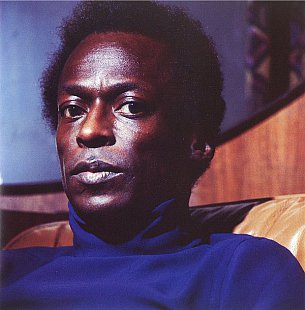
Carlos Santana, who says rarely a day
goes by when he doesn't listen to some Miles Davis, believes you only
have to listen to the Davis' album Live at the Plugged Nickel --
recorded in December 65 at a Chicago club but not released until '68
-- to realise the trumpeter had exhausted standards such as Stella
By Starlight and On Green Dolphin Street, and even
his own classic So What (from Kind of Blue).
By
the late 60s Davis, always a restless spirit, was looking
around and listening to the sound of the street. Rock bands and
soul-funk outfits were connecting the black communities and a younger
generation in a way he, in his early 40s, no longer was.
Sly Stone and Jimi Hendrix had more to
say to young people than he did, and in retrospect his albums such as
Filles de Kilimanjaro and In a Silent Way of 69 edged
towards electronics and the fusion with rock which would follow.
Encouraged by his younger wife Betty –
a soul-funk singer who was also sharing her favours with Jimi
apparently – Davis was introduce to rock music (Hendrix in
particular with whom he was scheduled to record at one point). And
with electric guitarist John McLaughlin and keyboard player Joe
Zawinul recruited for studio sessions which became In a Silent
Way, Davis began to break free of the constraints of acoustic
jazz and standards.
And whereas in the past he would have
producer Teo Macero wipe unused takes, in 69 he insisted Macero
record and keep everything that happened in the studio. This paved
the way for one of the most innovative and daring albums of Davis'
career, Bitches Brew released in late 69 which saw him shear
away from the jazz of the past.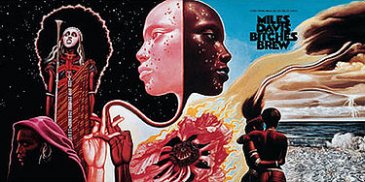
Bitches Brew was the album – a
double at the time in a cover by the same artist who had done Santana
and Hendrix sleeves – which alienated his conservative jazz
audience but took him to sharing stages with rock bands such as the
Steve Miler Band, Neil Young and Crazy Horse, and Santana at places
like the Fillmore East.
Yet Bitches Brew is not a rock
album – although the way Macero pieced together segments of tapes
from the sessions was increasingly common in rock after Zappa's Freak
Out! of 66 and the Beatles' Sgt Pepper's of the following
year.
The Brew music stands on a cusp
between jazz and rock: evocative and atmospheric, edgy (angry in
places even) and abstract. This music isn't, as jazz critic Greg Tate
writes in the liner notes to the Legacy Edition reissue, “in much
of a hurry to arrive anywhere, it creeps, unspools, staggers and
sprawls in pursuit of an improvisational New Jerusalem more concerned
with atmospherics and strangeness than momentum”.
For those who like their music to have
resolution, Brew is still a tough call.
At the time the respected critic Ralph
Gleason, a Davis defender, joked to Macero after receiving some
advance tapes, “No wonder jazz is dead. Guys like you are killing
it.”
Macero snapped back: “ I may have killed jazz, but I have
established a new kind of music. What have you done lately?”
A “new kind of music”? True.
Where much of the fusion jazz of the
70s which followed – McLaughlin's Mahavishnu Orchestra often being
a prime offender – was flat tack and headstrong, Bitches Brew
lays out foundations slowly, the guitars, Davis' trumpet and the
electric piano of Zawinul weaving stealthily.
In the studio Davis assembled a large
cast, among them the angular drummer Jack DeJohnette alongside Lenny
White, electric bassists Dave Holland and Harvey Brooks, Bennie
Maupin on bass clarinet, Chick Corea on electric piano alongside
Zawinul . . .
This idea of double quartets had been
previously explored by Ornette Coleman on his Free Jazz album of '61,
but Davis wasn't seduced by the drama and sonic clashes of free jazz.
Melodies were still important, although here they are often
truncated, slide in another direction, are picked up by different
instruments, left to hang.
The music on pieces like the 20 minute
Pharaoh's Dance, the 26 minute title track and the 14 minute
Miles Runs the Voodoo Down unrolls and weaves in and around
itself. It was quite unlike anything else at the time, and very
little since.
Because of that Bitches Brew –
a masterpiece of assemblage by Macero who also employed loops, delays
and reverb which were uncommon in jazz then, and are even today – has a timeless
quality, unlike some of the urban funk Davis would pursue on
subsequent albums like On the Corner which sound grounded in
the early 70s.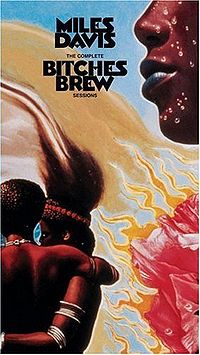
In 98 a four-disc set The Complete Bitches Brew Sessions was released (right), but that might be too much for most listeners.
The Legacy Edition is a double disc of the original album with alternate takes and single edits (proof to Davis' critics that he was trying to get to the pop market).
There is also a
previously unreleased DVD concert film of a snappily dressed Davis in
late '69 in Copenhagen with Shorter, Corea, Holland and DeJohnette
playing some Brew material but also keeping one foot back in
standards (I Fall in Love To Easily). The concert footage
shows how hard this music was to replicate successfully on stage and
confirms that Bitches Brew was a studio conception.
Later in life Davis took up painting
and many of his works were acclaimed. Davis was a painter in sound
also, Duke Ellington calling him “the Picasso of jazz”.
As Richard Cook and Brian Morton note
in their Penguin Guide to Jazz on CD he left “some
masterpieces, some puzzling abstract and a pile of fascinating
sketches”.
The colourful, fragmented but unified and engrossing Bitches Brew is one of his masterpieces.
.
Elsewhere occasionally revisits albums -- classics sometimes, but more often oddities or overlooked albums by major artists -- and you can find a number of them starting here


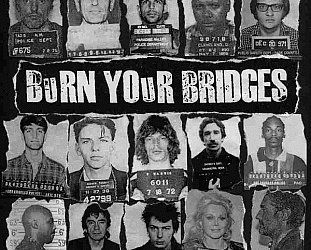
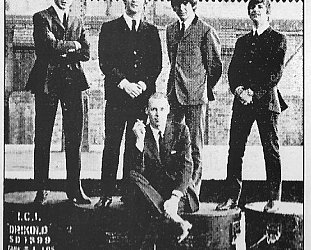
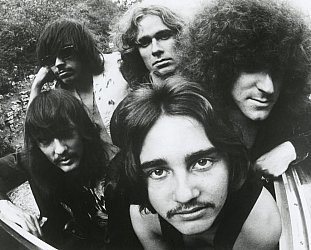
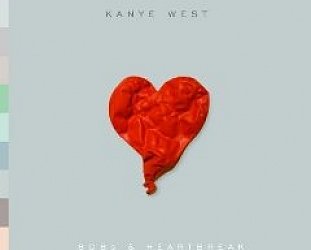
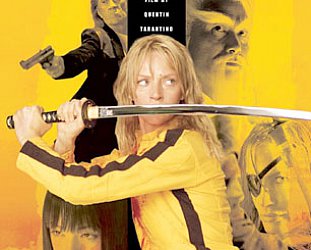
post a comment